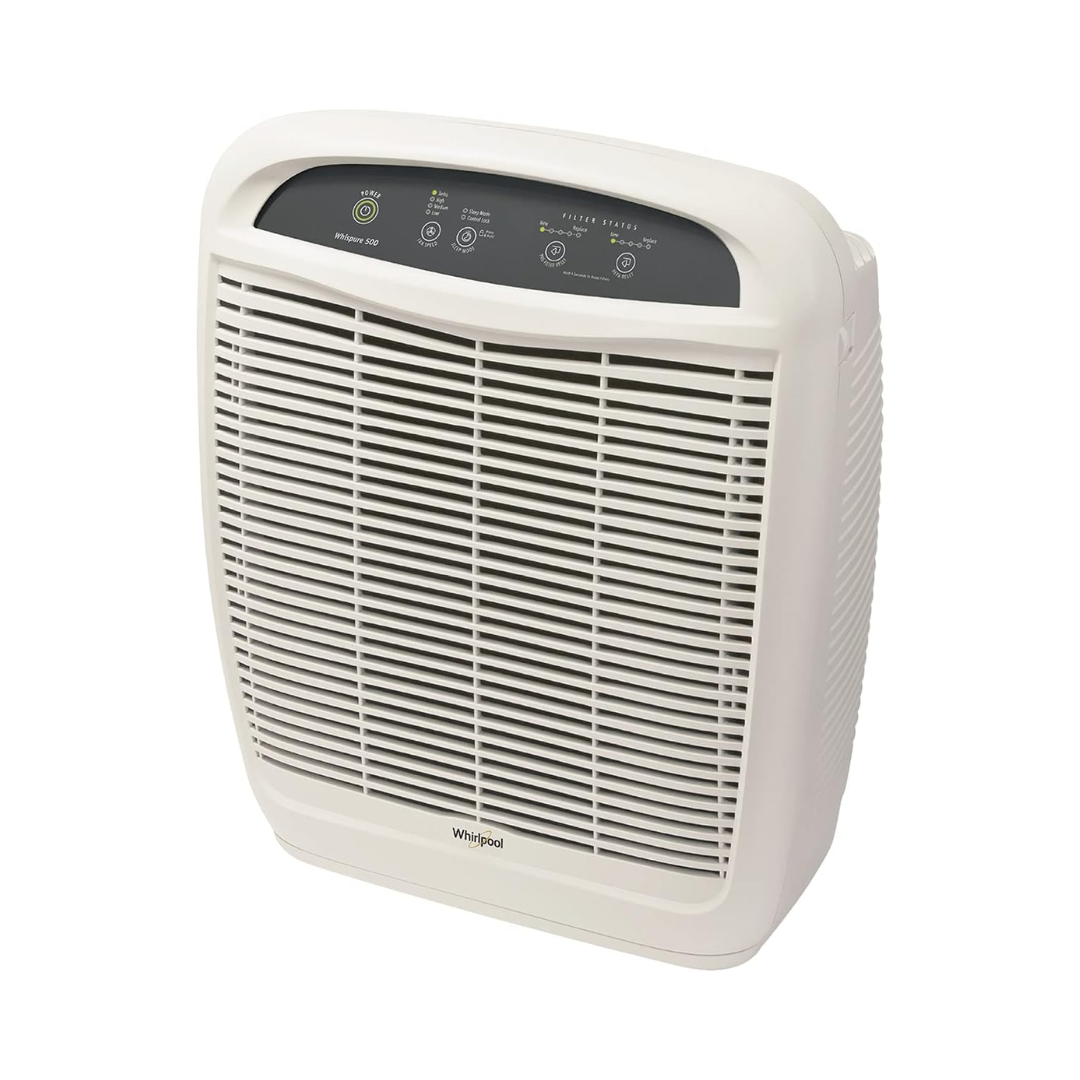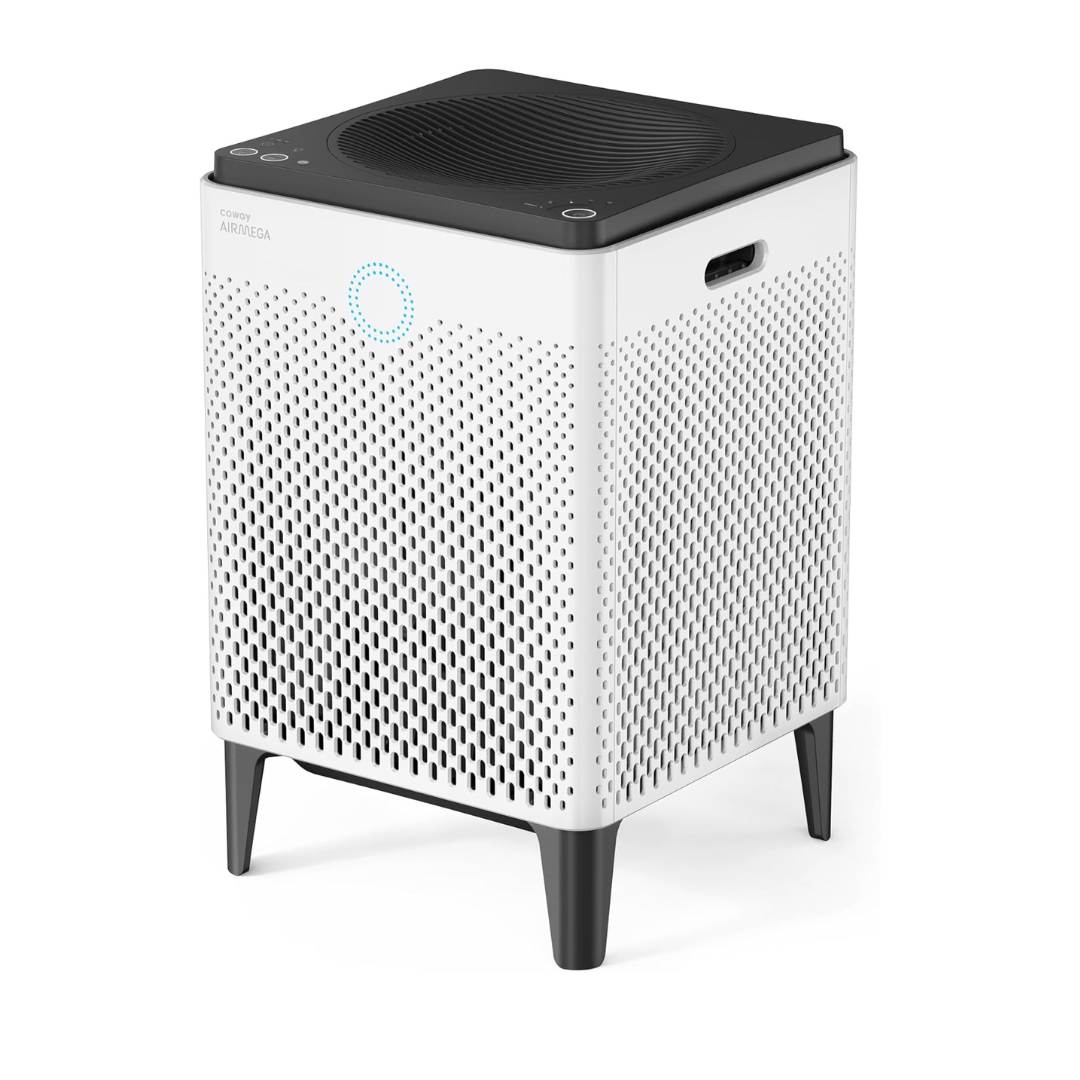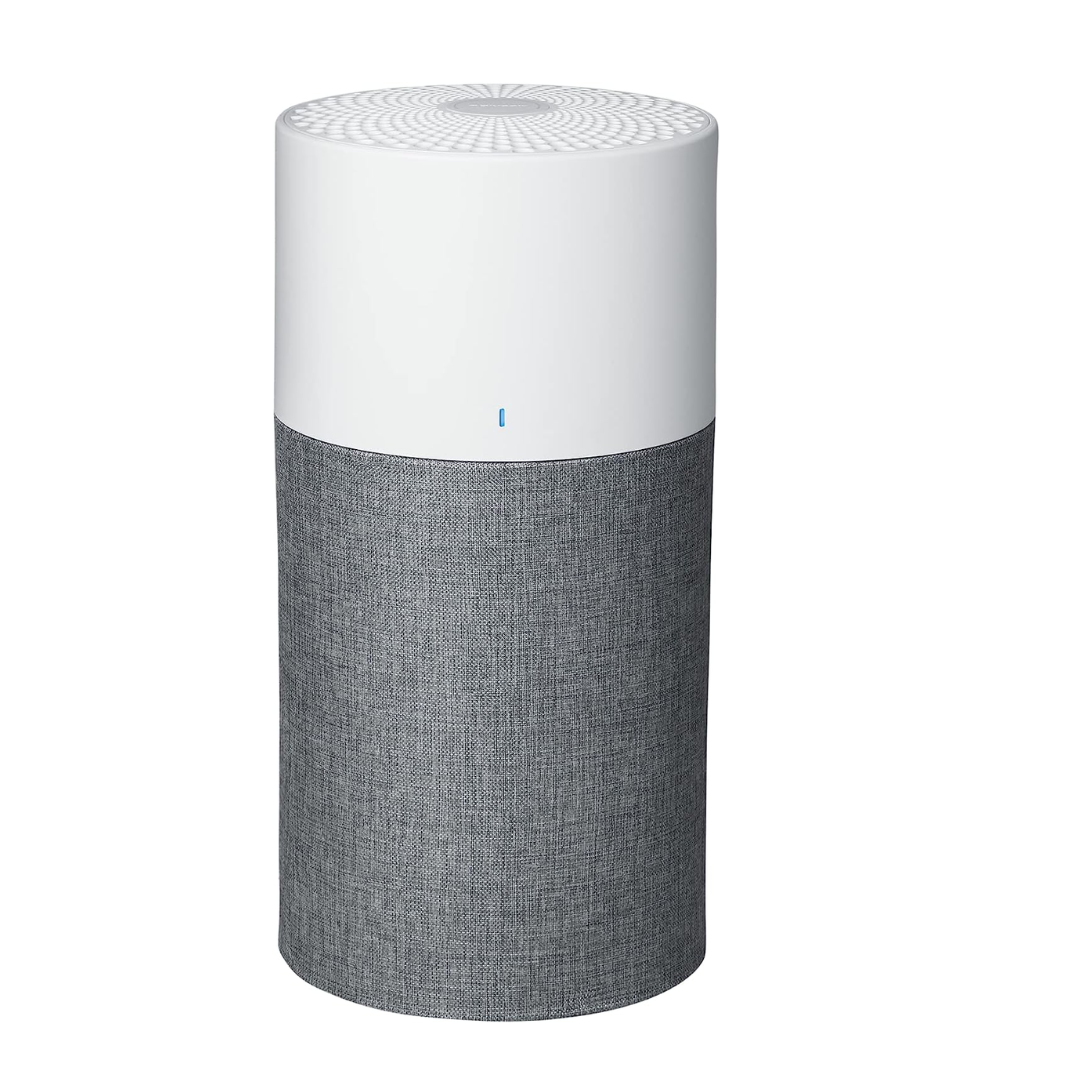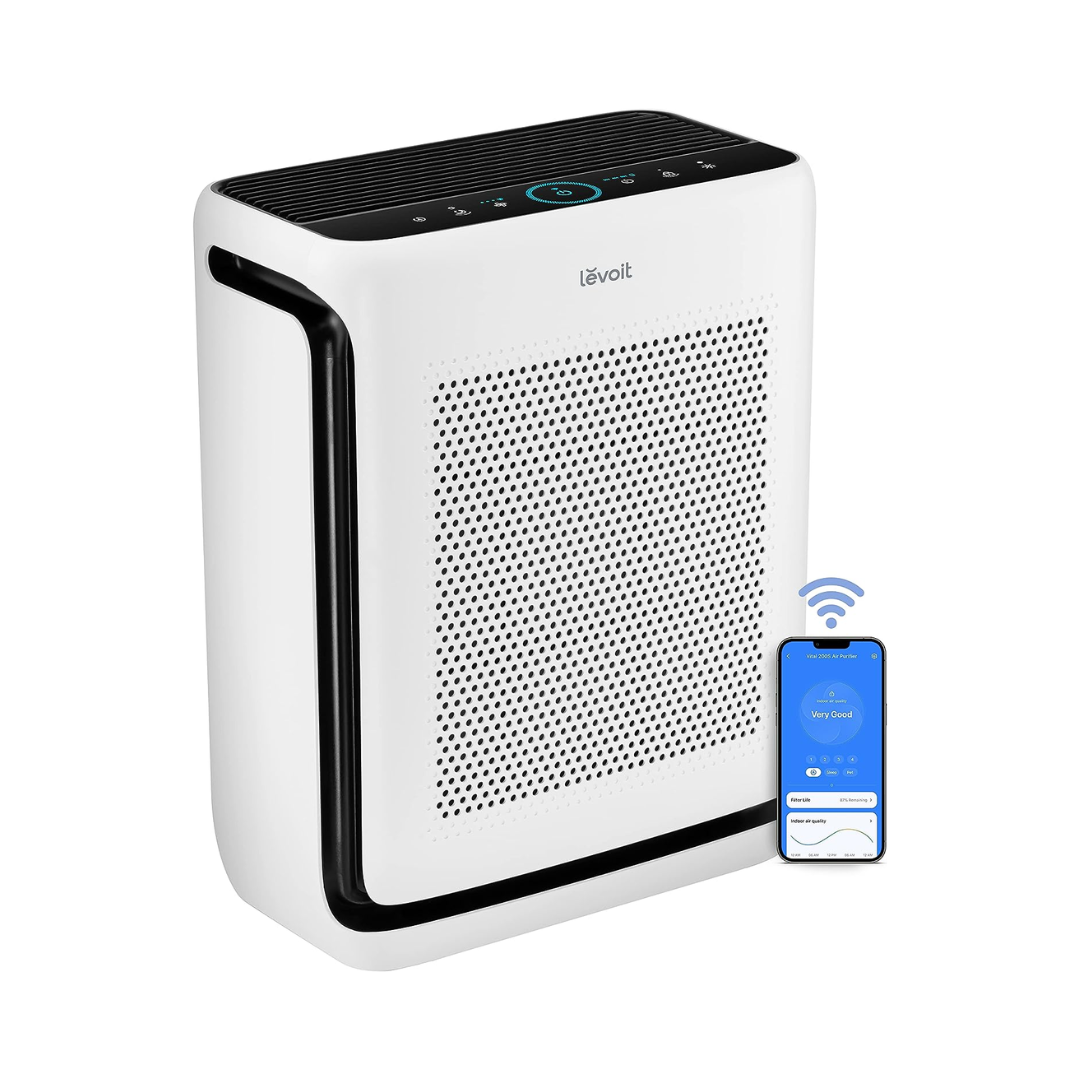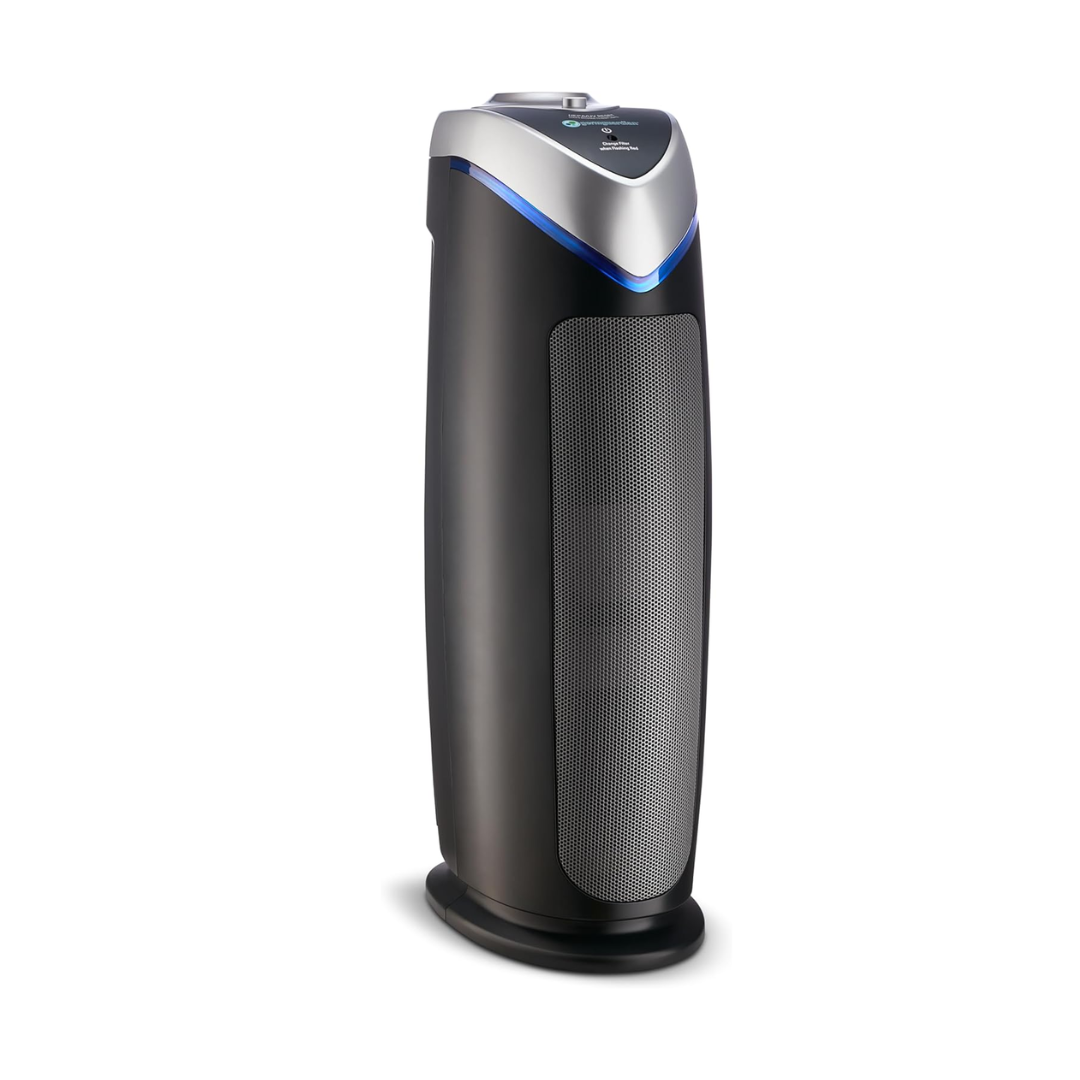We may be compensated if you purchase through links on our website. Our team is committed to delivering honest, objective, and independent reviews on home products and services.
If you suffer from asthma or seasonal allergies, an air purifier can help ease your symptoms by enhancing your home’s indoor air quality. Our team has researched the top air purifiers to help you find the best fit for your household.
Here are our top five recommendations, along with some additional air purifier information and answers to frequently asked questions.
Top 5 Air Purifiers
- Best Overall: Whirlpool Whispure Air Purifier
- Quietest: Blueair Blue Pure Air Purifier
- Best for Large Rooms: Coway Airmega Air Purifier
- Best for Pet Owners Levoit Smart Air Purifier
- Best HEPA Filter: Guardian Technologies GermGuardian Air Purifier
Compare Top-Rated Air Purifiers
| Product | Fan Speeds | Coverage Area | Warranty | Noise Level |
|---|---|---|---|---|
| Whirlpool Whispure Air Purifier | 4 | 490 sq. feet | 5-year | 44 dB |
| Blueair Blue Pure Air Purifier | 3 | 388 sq. feet | 1-year | 23–53 dB |
| Coway Airmega Air Purifier | 3 | 1,560 sq. feet | 5-year | 43.2 dB |
| Levoit Smart Air Purifier | 3 | 1,900 sq. feet | 1-year | 24 dB |
| Guardian Technologies GermGuardian Air Purifier | 3 | 153 sq. feet | 3-year | 44.2–61.2 dB |
| Product | Fan Speeds | Coverage Area | Warranty | Noise Level |
Best Air Purifier Overall
Key Features
- Offers four fan speeds, a sleep mode, and a timer
- Purifies up to 490 square feet
- Runs at 43–44 decibels
- Comes with a 5-year warranty
What Customers Are Saying
Customers had this air purifier set up in minutes. They said that it was effective at eliminating dust and reducing odors. However, those who weren’t happy with this machine claimed that it was noisy and hot to the touch when it was on.
Quietest Air Purifier
Key Features
- Offers an auto mode
- Purifies up to 388 square feet
- Runs at 23–53 decibels
- Comes with a 1-year warranty
What Customers Are Saying
Positive reviews for this machine said that it was energy-efficient, quiet, and sleek. However, some customers left negative reviews because the unit didn’t eliminate all unpleasant odors or pet hairs.
Best Air Purifier for Large Rooms
Key Features
- Offers three fan speeds, a sleep mode, an auto mode, an eco mode, and a timer
- Purifies up to 1,560 square feet
- Runs at 43.2 decibels
- Comes with a 5-year warranty
What Customers Are Saying
Customers who were happy with this air purifier said that it was easy to clean and operated quietly. However, unhappy customers wrote that it was bulky. They also said that the lights that indicated the status of the filter and air quality were inconsistent.
Best for Pet Owners
Key Features
- Offers three fan speeds, a sleep mode, an auto mode, and a timer
- Purifies up to 900 square feet
- Runs at 52.2 decibels
- Comes with a 1-year warranty
What Customers Are Saying
Customers liked how easy this air purifier was to adjust. They said that it was especially useful for removing floating dust in the air. However, some users were disappointed with how often the filter needed to be replaced.
Best HEPA Filter Air Purifier
Key Features
- Offers three fan speeds
- Purifies up to 153 square feet
- Runs at 44.2–61.2 decibels
- Comes with a 3-year warranty
What Customers Are Saying
Customers praised this product for being easy to use and quiet. However, customers who left negative reviews often mentioned its cheap build, which caused it to emit a burning smell or stop working altogether.
Air Purifier Buying Guide
Poor air quality can exacerbate allergies. An air purifier removes irritants from the air, improving the air quality and preventing respiratory issues. In our guide below, we’ve outlined important factors to consider about an air purifier to ensure that you get the right model for your home.
Needs
If you suffer from allergies or asthma, choose an air purifier with a HEPA filter that can remove 99.97% of most airborne particles that are 0.3 microns or larger. For chemical sensitivity, look for a model that eliminates odors and volatile organic compounds.
Size
To choose the right size air purifier, calculate the square footage of the room you want to purify by multiplying its length by its width. Select a unit with a coverage rating that’s greater than or equal to this measurement.
ACH Rating
Air change per hour (ACH) reflects how often an air purifier filters the entire volume of air in the treatment space each hour. For example, an air purifier with an ACH rating of four pulls air through the machine and cleans it four times per hour. If you’re particularly sensitive to allergens, a higher ACH rating can be useful to constantly keep the air around you clean.
Settings
Most air purifiers offer high, medium, and low fan speeds to match your purifying needs. You can also find an auto mode that adjusts the fan based on the air quality it senses, a sleep mode that keeps the fan quiet when you’re in bed, and a timer that runs the fan for a set number of hours.
Service Indicator
If you want to ensure that your purifier is working to the best of its ability at all times, look for one that has a service indicator light. This tells you when it’s time to clean or replace its filter.
Noise Level
Air purifiers can be noisy, especially when operating at the highest speed setting. If you’re planning on leaving the appliance in your bedroom or home office, look at the decibel level. For a unit that sounds like subtle white noise, stay below 45 decibels.
Types of Air Purifiers
There are two types of air purifiers.
Portable
In this review, we focus on portable air purifiers. These devices are designed to clean the air in a single room. Not only are they smaller and easier to move throughout your house, but they’re also more energy-efficient and affordable than their whole-home counterparts.
Whole-Home
Whole-home air purifiers attach to existing heating or air conditioning equipment. These use more energy and are more expensive than portable models. However, they filter a larger area.
Types of Air Purifier Filters
Different air purifiers use different filters. Most machines come with at least one air filter, but you’re responsible for purchasing any replacement filters.
Pre-Filter
A pre-filter captures large particles that enter the device. It’s smaller and cheaper than a HEPA filter. Check this filter every few months, and replace it when it’s dirty.
Second Pre-Filter
A second pre-filter catches the smaller particles that the first pre-filter didn’t. This middle filter also targets odor molecules.
HEPA Filter
HEPA filters remove up to 99.97% of airborne particles. Though effective, they’re expensive to replace.
How Does an Air Purifier Work?
Your air purifier uses a three-step process to filter the air in your home.
- The air purifier sucks in air from the room—During this step, the fan pulls air into the machine and passes it through the pre-filter. The pre-filter captures most of the large airborne particles, such as dust and dirt.
- The air filters through the second pre-filter—Before hitting the HEPA filter, the air and any remaining particles and odors go through the second pre-filter.
- The air goes through the HEPA filter and cycles back into the room—In this last step, the air passes through the HEPA filter before the fan pushes it back into the room.
How To Get the Most Out of Your Air Purifier
Though air purifiers can be a big investment upfront, there are simple steps you can take to save money in the long run. We explain some of them below.
- Clean the house regularly. The more contaminants you remove from your home, the less work your air purifier has to do. Dust your tables, desks, and shelves every week, and vacuum your floors at least twice a month.
- Use candles sparingly. Candles emit carbon dioxide, which your air purifier has to filter.
- Invest in an energy-efficient purifier. Units with an ENERGY STAR certification may be a bit more costly, but they use less energy, saving you money over time.
- Change the filter every time it gets dirty. You may be tempted to change the filter less often than the manufacturer recommends to save money. We advise against this. Operating an air purifier with a dirty filter reduces its efficiency and can lead to mechanical malfunction.
- Purchase washable filters. Replacement filters can cost anywhere from $50 to $500. By using a reusable, washable filter, you won’t have to buy a new one every time it gets dirty.
Frequently Asked Questions About Air Purifiers
Can an air purifier eliminate my allergies?
Air purifiers can’t completely stop you from developing allergies, but they can go a long way in reducing both the severity of your symptoms and the amount of time you have to deal with them. When you’re shopping for an air purifier for allergies, be on the lookout for one with a HEPA filter that eliminates common pollutants that cause allergies, such as pollen, dust, and pet hair.
How much maintenance does my air purifier need?
The frequency at which you need to clean or replace your air purifier’s filter largely depends on the type of filter, the manufacturer of the unit, the size of the room, and the quality of the air. However, you should change most filters every six to eight months.
How often do I need to use my air purifier?
Air purifiers are designed to run for a continuous period of time. You can opt to leave your air purifier on all day, although that can lead to higher energy and electricity costs. Many purifiers come with a timer or auto mode. If that’s not the case with your purifier, try running it for eight to 12 hours a day.
How We Selected the Best Air Purifiers
To provide our readers with the best air purifier recommendations possible, we rely on several key sources of information to help guide our selection process.
Initial Research: Our research process began by generating a list of purifiers with a significant number of verified-buyer reviews and an average customer review rating of 4–5 stars. We looked at positive and negative reviews alike, focusing on information from both satisfied and critical buyers.
Expert Insights: Through our years of experience, we’ve learned that listening to what others have to say is key to building accurate, well-rounded articles. To complement our in-house expertise, our team looked at reviews and videos from trusted publications and independent testers, spoke with subject matter experts, and drew insights from reader contributions.
Final Product Selection: We then began fine-tuning our list by replacing older models with the latest versions and eliminating any discontinued models. From there, we pared the list down further by comparing each model’s feature set and selecting the best-in-class options for a variety of buyers, budgets, and scenarios.
Why You Can Trust Us
This Old House has empowered homeowners and DIY-ers for more than four decades with top-notch home improvement advice in the form of television programs, print media, and digital content.
Our team focuses on creating in-depth product and service review content. To date, we’ve published over 1,600 reviews on products in the home space, from doorbell cameras and backyard fencing to pool vacuums and snow blowers.
Once we conclude our research, we craft a comprehensive, user-friendly article of recommended products and additional information to help our readers make the right purchase.
Questions or Comments?
To share feedback or ask a question about this article, send a note to our team at reviews@thisoldhousereviews.com.
